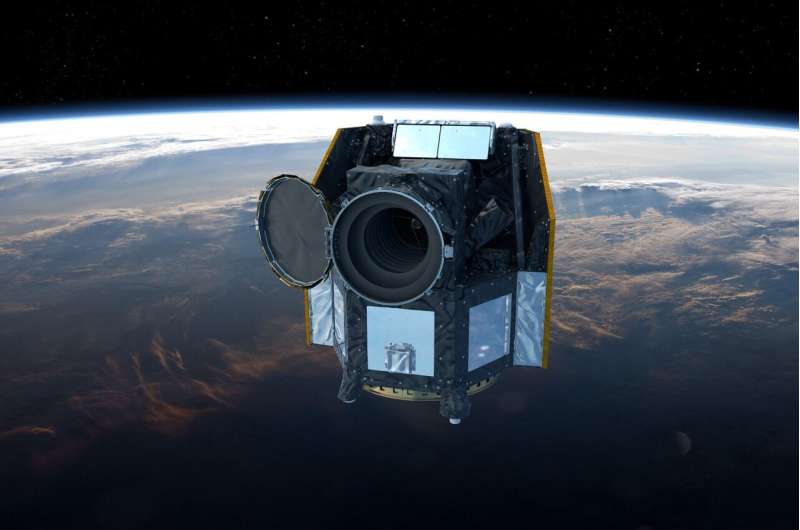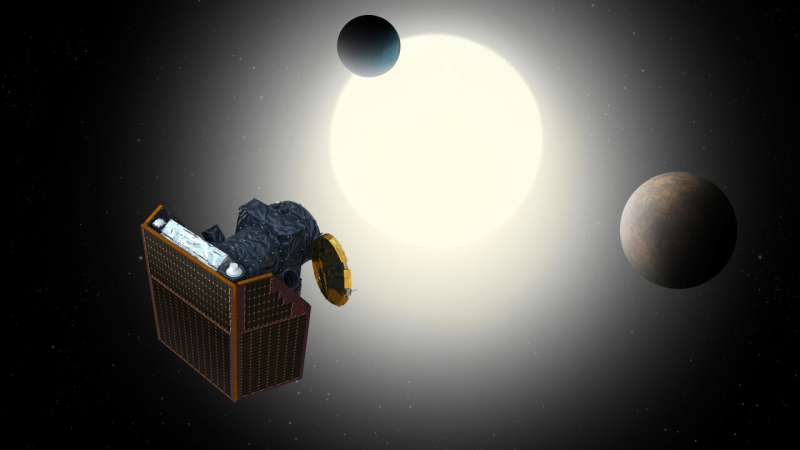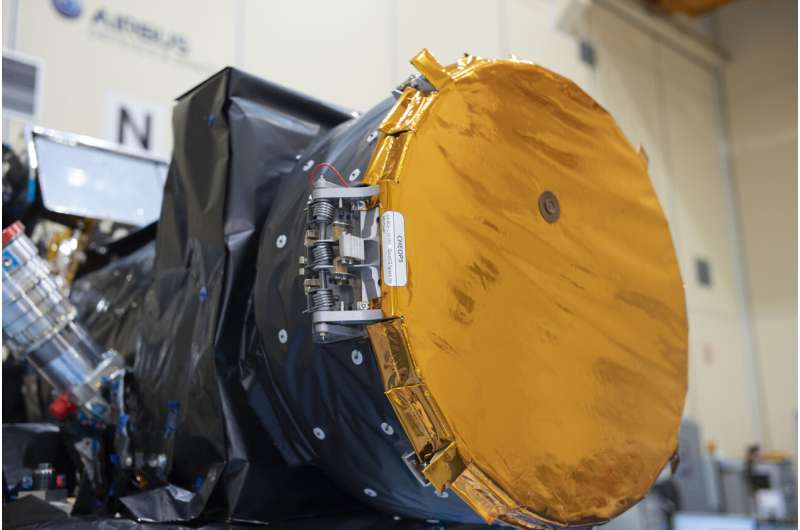CHEOPS opens its eye to the sky

Since the launch of CHEOPS on 18 December 2019, the project has progressed smoothly and successfully through its planned operations and test activities.
The Launch and Early Orbit Phase was flawlessly completed on 22 December, and the instrument was switched on for the first time on 8 January 2020. By late January, a number of health tests and calibration activities had demonstrated that the instrument was behaving as expected and ready to have its focal plane exposed to light.
Eventually, one of the mission's major moments of truth arrived this morning, when the telescope cover was opened. This irreversible operation allowed the instrument to see the sky for the first time and was a high point for the project team achieved through years of work.
"Opening the cover of the telescope baffle is a critical operation for CHEOPS, enabling the telescope to observe its target stars, and we are extremely pleased that it was performed flawlessly," says Nicola Rando, ESA CHEOPS project manager.
The main goal of CHEOPS is to observe nearby, bright stars that are already known to host planets. The mission will observe these planets, as they transit in front of their host star and block a fraction of its light, to measure their sizes with unprecedented precision and accuracy.

The signal of an exoplanet transit can be extremely weak, especially for the smallest planets. Measuring it with the high precision needed to investigate the planet properties represents an observational challenge that can only be met from space, and requires the instrument and satellite to be highly stable.
One of the key mission elements is a 95-cm long baffle that shields the CHEOPS telescope from straylight and minimises light contamination from unwanted sources, such as light reflected by our own planet Earth. The CHEOPS baffle cover, which can be compared to the lens cap of a camera, covered the front end of the telescope baffle and protected the science instrument from dust and sources of bright light (for example, sunlight) during testing, launch and the first phases of in-orbit commissioning.
Opening the baffle cover in orbit was a mission-critical procedure that was closely monitored by members of the in-orbit commissioning team at the Mission Operations Centre in Torrejón, near Madrid, Spain.
The opening mechanism relied on a titanium fastening bolt surrounded by a cylinder made of a shape memory alloy. Heating the cylinder caused it to elongate and break the bolt, which subsequently allowed a spring-loaded hinge to swing the cover open and expose the telescope to the sky. The telescope cover is now permanently locked in the open position by a hook engaged in a ratchet.

"The opening mechanism is known to be extremely reliable, as it was extensively tested on ground and already flown on previous space missions, but it was still quite a nerve-wracking moment to witness, and we are all very excited now that the telescope has opened its eye to the Universe," says Francesco Ratti, ESA CHEOPS instrument engineer.
Executing this critical procedure is a major step along the path towards CHEOPS routine observations. Over the coming weeks, the in-orbit commissioning team will test the instrument's detector and its performance, making sure it behaves as designed and as required to detect exoplanet transits and tackle the mission's ambitious science questions.
Provided by European Space Agency




















